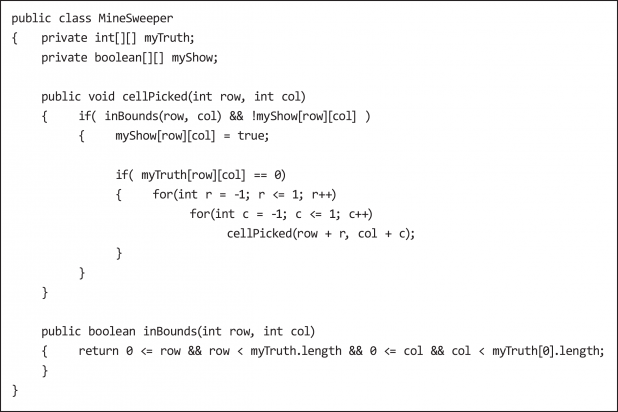
The text above may look Greek to some, but, as some Holyoke students are finding out, it’s actually the logic behind the game Minesweeper, written in Java.
Spanish, English, Java, Python
Not every student will become an author or microbiologist, but they’re still expected to take English and science classes throughout school. The same reasoning holds true when assessing the value of Holyoke JR/SR High’s new coding club. While members may not pursue jobs as programmers or developers, the skills learned from coding can be beneficial in a wide range of fields.
At the center of coding is problem solving, an ability useful for virtually any vocation or avocation, explained club sponsor Chandra Parker. She and Perry Ingram make up the technology department at Holyoke School District and are the backbone of the coding club.
The club just started this semester, but it’s been slowly growing with each meeting. They meet just twice a month during lunch, where they complete an “unplugged” activity together. The goal, however, is to provide resources for members to practice coding during their free time between meetings, too.
Parker and Ingram don’t want the club to be a high-stress addition to students’ workload but an outlet that they can utilize at their own pace.
The unplugged meeting activities they’ve done so far have focused on problem solving and teamwork. Doing so creates an environment where students learn to collaborate, which will come in handy when they get to coding together, Parker explained. As for their extra practice resources, the club takes advantage of some of the many free online coding programs such as www.code.org.
To lay the groundwork for computer science education, Parker and Ingram are teaching club members about such things as binary and HTML. Beyond that, there are a number of programming languages such as Java, C++ or Python to learn. That, in turn, leads to the know-how to design websites or build apps, for example.
Initially, the technology department’s goal was to create a coding club for students in grades 3-6. That would give students more exposure to coding before they enter junior high, where robotics club is available. Though they haven’t been able to get an elementary-level club started yet, Parker and Ingram envision Holyoke schools providing additional coding opportunities for all ages as time goes on.
Already, Holyoke elementary students in grades 1-6 have a few coding experiences throughout the year. It’s based on Hour of Code, a global movement to demystify code and show people that anyone can learn the basics of computer science.
Laura Loutensock, who works in the elementary school’s technology department, teaches students about coding using Blockly. It’s a library of visual blocks that can be dragged and dropped to create programs, Loutensock explained. Blockly is easier for young kids to learn, she added, because it uses a visual language rather than text-based.
Reiterating the life skills coding can teach, Loutensock pointed out that when a program doesn’t run as expected, students must troubleshoot to debug, developing perseverance and resilience. Coding also helps kids visualize abstract concepts, as well as apply critical thinking and computation skills, she added.
Not many schools offer coding clubs or classes for all ages, but since every Holyoke student already has access to a Chromebook, the school is in a unique position to offer such training for students.
The full article is available in our e-Edition. Click here to subscribe.
